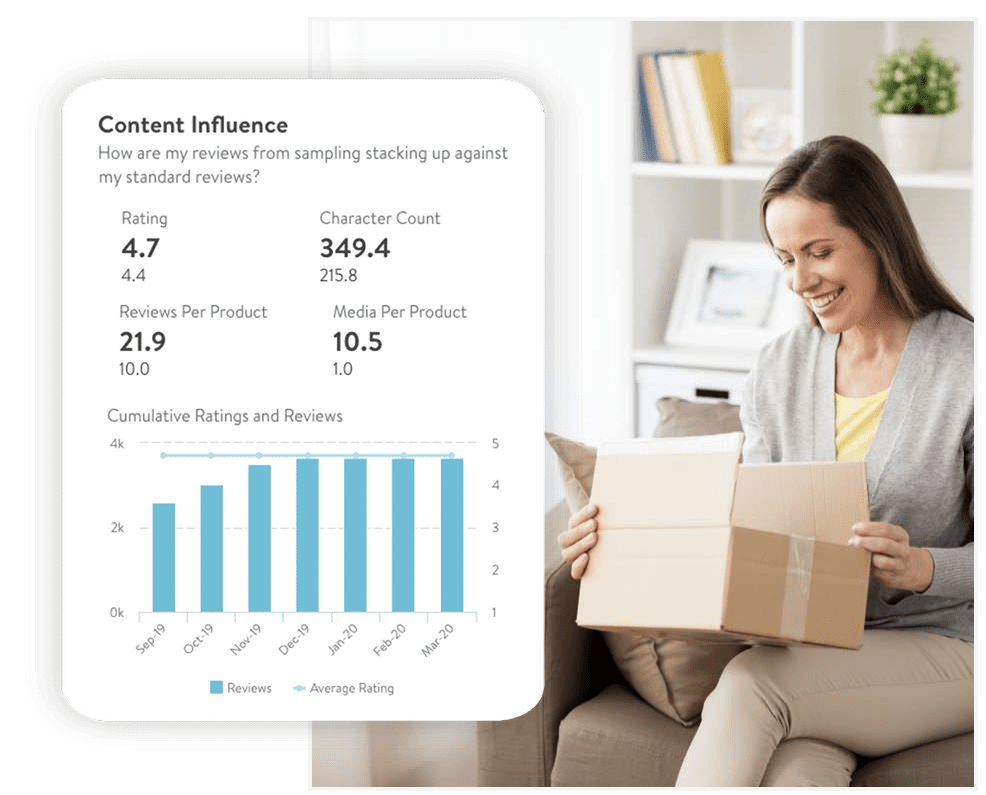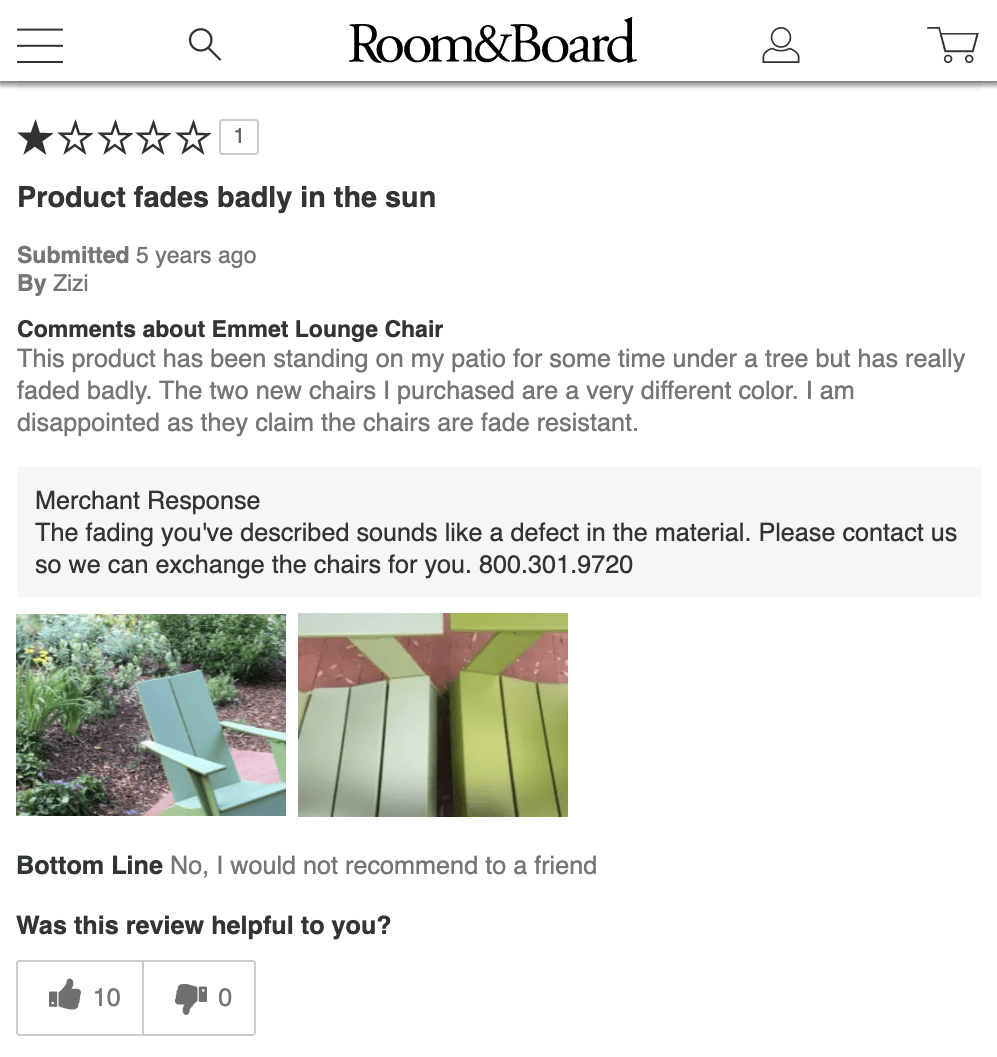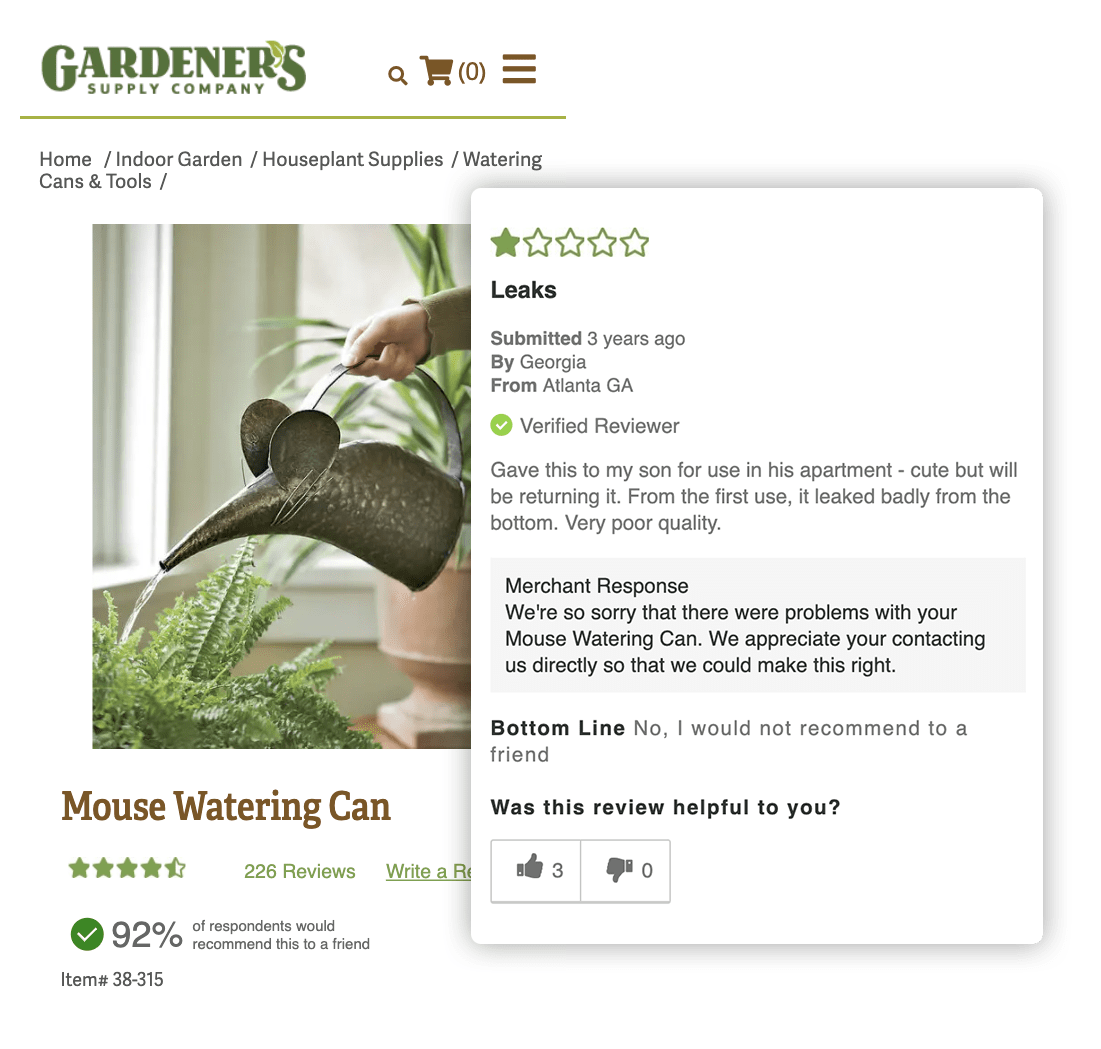User-generated content (UGC) — including reviews, Q&A, photos and videos — is proven to drive sales growth for brands and retailers. Our own data tells us that once a product starts displaying reviews, the conversion rate for that product increases by 65%, on average. The same goes for imagery: on average, a product experiences a 69% increase in conversion when just one customer-generated image is added to the product page.
While sales growth is certainly an important benefit of UGC, it’s far from the only one. In fact, there’s another huge plus of collecting this content. And it’s one that’s often overlooked by even most progressive brands and retailers.
UGC is full of rich data that — when leveraged — can drive positive change throughout your entire organization.
Of course, you probably use other tools — including surveys — to capture feedback from your customers that you can then take action on. But the beauty of UGC is that you can easily map feedback to specific products. And that makes it a whole lot easier to take meaningful action on the data.
Why eCommerce Managers Should Analyze UGC Data
Constant analysis of UGC data is key to uncovering impactful ways to improve the ROI of your UGC program.
For starters, this data gives you a very clear picture of what types of content is driving sales. For example, you might discover that website visitors who engage with reviews convert at a much higher rate than those who don’t. Based on this data, you determine it’s important to have plenty of reviews for plenty of your products — including any offerings you’re launching in the future. So you decide to execute a series of pre-launch product sampling campaigns to generate reviews before your new products hit the shelves.

Data can also help you understand how shoppers are interacting with the different components of your content display — and how it’s impacting sales. You can then use this information to optimize your display — and drive even better results.
For example, our friends at Clinique might notice that a lot of shoppers filter reviews to see only the one-star content. Surprisingly, though, these folks go on to convert at a higher level than those that don’t.
There might be an opportunity here for Clinique to make this filtering functionality even more prominent. That way, shoppers can easily identify the “worst case” scenario and determine if it’s something they can live with.
5 Other Teams that can Leverage UGC to Drive Positive Change
So the data from your user-generated content can help you optimize your overall program. But that’s just the tip of the iceberg.
UGC is full of actionable insights that can drive meaningful change throughout your company.
But data without action is pointless. The key is to get the right data into the right hands to put the data into action.
Who can benefit from the insights in UGC? Let’s take a closer look at how five of the likely key teams at your company can leverage the data from UGC to make impactful improvements — and boost your company’s bottom line.
The Product Innovation Team
Innovation teams are constantly looking for opportunities to develop new products — or even entire product lines. The data from UGC is a great resource to uncover these.
For example, let’s say there’s a CPG company that sells protein drinks. The company’s product innovation team is always on the hunt for new ideas. The team analyzes their UGC for existing products and discovers that shoppers frequently suggest a pumpkin pie flavored product. They also notice that a competitor offers a pumpkin spice protein drink, and it seems to perform well with shoppers. So the team starts putting together a proof of concept (POC).
The R&D Team
Coming up with a great product idea isn’t enough. Instead, it’s critical to iterate and improve on that product to ensure it’s in line with market demand. The data from UGC can help your research and development (R&D) team do that. In fact, UGC is full of actionable insights you can use to discover and fix problems with your products — or identify and implement ways to take your product to the next level.
Let’s take a look at an example of these insights in action.
Clif Bar & Company, a food and beverage brand, recently developed a new product formula. Before officially launching, the company conducted a sampling campaign. They found that the average rating on the new bar was 2, and sentiment around the word “taste” was particularly negative. After digging into the content, they found that one of the ingredients wasn’t mixing well with the others. They made a quick change to the formula and ran another product sampling campaign prior to launch. The result? The average star rating jumped to over 4. And the company launched a product they knew would resonate with their customers.
The Merchandising Team
Merchandising teams are responsible for ensuring a retailer sells the right mix of products that meet the needs of its customers. Typically, a merchandise manager oversees buying for a specific category or set of categories. But in order to make informed buying decisions, they’ve got to understand why a product did (or didn’t) sell.
Your merchandising teams can analyze the UGC from your own eCommerce site — and benchmark this against your competitors — to uncover great insights. The result: better purchase decisions. For example, merchandisers might leverage data from UGC to eliminate products, add new offerings, negotiate better deals, and even work with merchants to improve products.
Let’s take a look at a couple real-life examples.
Room&Board had a lounge chair that sold well but had the occasional poor review. Looking at those reviews as a whole, a criticism that kept coming up was that the fade-resistant chairs weren’t living up to those claims. After identifying the issue as a material defect and making exchanges for those customers, the merchandising team used this data to negotiate a major price break on a large new order they were placing.

Gardener’s Supply Company is another PowerReviews customer whose merchandising team depends on the data from UGC. Recently, this retailer found that one of their top-selling watering cans had several reviews that noted leaking. The merchandising team was able to share specific data with the merchant to make improvements to the watering can.

The Customer Insights Team
Customer Insights teams are focused on better understanding current and prospective customers. UGC can be a powerful source of data to enhance their analysis, and it can even lead to improvements of the overall customer experience.
For example, Discount Tires is a PowerReviews customer that collects ratings and reviews not only for products — but also for store experiences. Early in the COVID-19 pandemic, the company implemented some store-specific policy changes, including mask requirements and the option to self park in order to allow for social distancing. When analyzing the store reviews, Discount Tires determined these safety measures were well received by customers. Based on this data, they made the decision to make these company-wide policies.
The Marketing Team
Marketing teams are tasked with developing messaging and campaigns that attract the right shoppers. The data from UGC can make their initiatives even more effective.
In fact, there are countless ways marketing teams can leverage the data from UGC to better position, differentiate and promote a product. Let’s take a look at a couple of examples.
One way marketers can leverage the insights from UGC is to get a better understanding of what matters to shoppers who have purchased a specific product. For example, a skincare company can determine whether shoppers care about an item being fragrance-free. If it’s a feature that’s frequently mentioned in reviews, the team may want to make this a more prominent message on the website and other marketing initiatives.
Analyzing your UGC (and that of your competitors) is also a great way for your marketing team to understand what words your shoppers are actually using when describing products. Your marketing team can then use this information to improve campaign performance. For example, New Balance, a PowerReviews customer, analyzes UGC to understand how their customers are talking about their products. Then, they use the words and phrases they uncover to power SEO and paid search ads.
Maximize the Impact of Your UGC
User-generated content — including reviews, Q&A, photos and videos — is full of powerful insights that can position your business to better serve its customers. But all too often, this rich data source isn’t used to its full potential. And its impact can stretch way beyond your ecommerce team alone.
Ensure you fully explore all the different insights it generates and make an active effort to get these into the hands of the different teams around your business which can take action on them. In doing so, you make yourself a hugely valuable resource. Why? Because doing so enables meaningful, data-driven changes to products and experiences — which can have a significant and measurable impact on your company’s bottom line.


